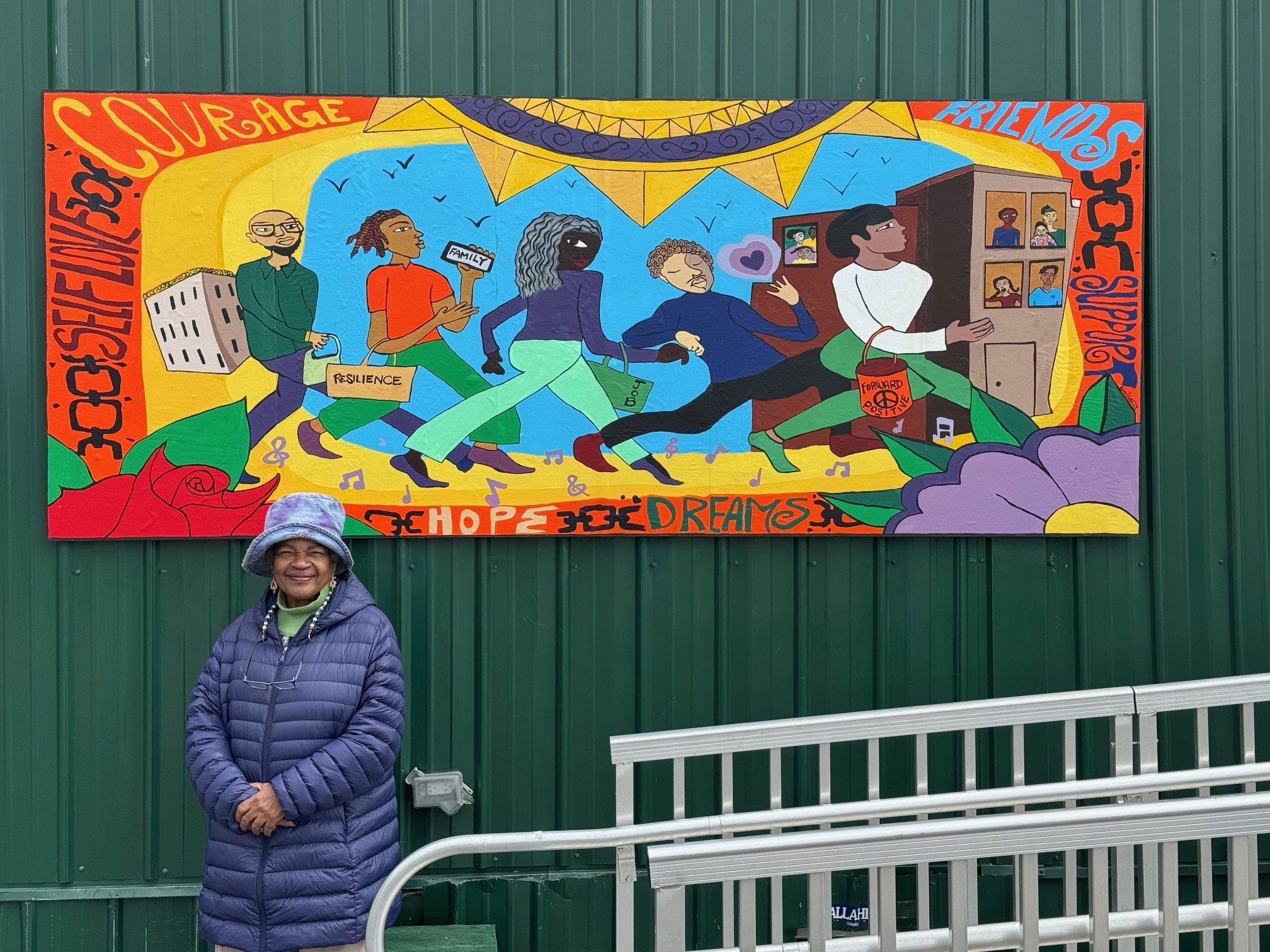
Rikers Island hosted a ceremony today unveiling a mural that acclaimed artist Dindga McCannon co-created with people in custody. Correctional Health Services, part of NYC Health + Hospitals, commissioned Towards a Brighter Tomorrow! to adorn CHS’s Reentry Services Center, which detainees pass through upon release. It’s McCannon’s first mural inside a correctional facility, and one of few works ever made for Rikers Island.
“Art should be available to everybody—in all kinds of non-traditional spaces,” McCannon told me. Her scene aims to remind viewers “that when you’re coming out of prison, you’re starting with a fresh slate.”
America’s largest municipal healthcare system is undergoing a creative renaissance. The unparalleled art collection they unwittingly amassed over the 20th century is receiving newfound attention. In December, the organization staged an unprecedented exhibition pairing selections from that cache with art by people incarcerated at Rikers Island, all beneath Woodhull Hospital’s Keith Haring mural. NYC Health + Hospitals’ Arts In Medicine program also expanded significantly last year thanks to a $3 million donation from the Laurie M. Tisch Illumination Fund, the second grant since its founding in 2019.
Correctional Health Services was formed in 2016 to provide healthcare to people in the city’s jails. In addition to expected services like providing prescriptions and mental health support, they also assist detainees approaching release. “Incarceration is incredibly disruptive to people’s care and lives,” said Ellie Epstein, the division’s assistant vice president for Reentry and Transition Services. Reentry is ideal, Epstein noted, but it’s also disruptive, and sometimes sudden. “We want to do everything we can to make sure we’re providing support for our patients, both clinically and in these wraparound services.”
Dindga McCannon provides guidance to NYC Health + Hospitals/Correctional Health Services (CHS) patients as they paint panels of a new mural for the CHS Reentry Service Center. Photo: Nicole Levy
That includes material support like free smartphones—and psychological support through art. Epstein’s dream to put art on the Reentry Services Center became real when she mentioned it to her friend Georgia Lurie, a director at London-based Pippy Houldsworth Gallery, which represents McCannon in the U.K.
The noted fiber artist, painter, and educator from Harlem and the Bronx worked extensively with Black female artist collectives, co-founding Where We At with Faith Ringgold and Kay Brown in 1971. Thirty-nine years later, her painting The Last Farewell (1970) smashed its estimate at auction, and McCannon scored her first-ever solo show. Fridman Gallery also sold her work for robust sums at Art Basel Miami Beach that year.
McCannon painted several now-destroyed murals for City Arts in the early 1970s, and another on Fridman Gallery’s upstate location in 2021. As usual, she sought outside input to inform her work for Rikers Island. “Even though the population is transitory,” she said, “wherever public art is installed, the people who have to live with that public art should have a little bit of say.” She brought an open mind to on-site discussions with one male and one female group from the facility’s Groups for Addictions Treatment Enhancement (GATE) units, then translated the ideas and hopes that they mentioned through her own style.
While McCannon’s well known for incorporating a vast range of materials, her latest mural collages narratives and paint from 40 hands instead. Once McCannon designed the artwork from their talks, participants helped paint it. McCannon and her son brought those five panels back to her Bronx studio, where she spent a week applying accents and unifying the disparate brushstrokes.
The result is a vibrant composition where varied figures strut distinctively in sync, toting bags like the ones CHS gives out, as loved ones watch on. Words of encouragement ring the scene—these were McCannon’s most direct takeaways from the talks she said NYC Health + Hospitals facilitated expertly. Rikers Island bears a dark legacy, but perhaps art can help grease the shift from shame to rehabilitation.